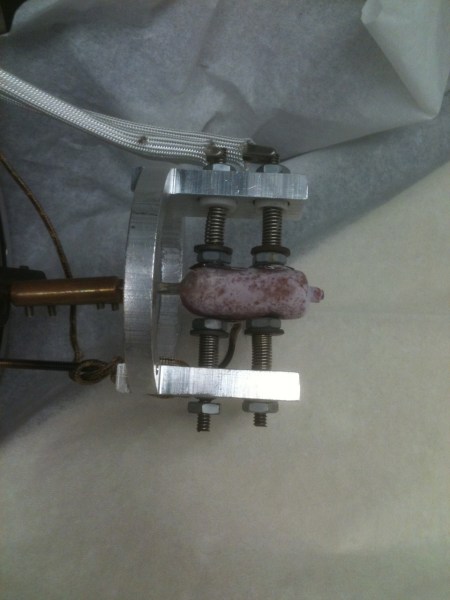Silica nanosprings are readily coated with a variety of materials, such as metal oxides. Semiconducting metal oxides are ideal for constructing sensors based on redox processes. We currently are collaborating with Prof. Vladimir Dobrokhotov of the Department of Physics and Astronomy at Western Kentucky University on the development of explosive sensors. The sensors are multielement devices constructed with ZnO coated nanosprings, where the nanopsprings of each element are coated with different metal nanoparticles. The response to explosives differs from nanoparticles of different elemental composition. The signal taken in totality is a fingerprint that can be used to discriminate between different molecules in the air.
 The image on the right is a multielement ZnO nanospring sensor and the image on the left is a single element-multielectrode ZnO sensor.
The image on the right is a multielement ZnO nanospring sensor and the image on the left is a single element-multielectrode ZnO sensor.
For details on these sensors go to:
- ZnO Coated Nanospring-Based Chemiresistors
- Thermal and Optical Activation Mechanisms of Nanospring-Based Chemiresistors
- Toward the nanospring-based artificial olfactory system for trace-detection of flammable and explosive vapors
- The Effect of UV Illumination on the Room Temperature Detection of Vaporized Ammonium Nitrate by a ZnO Coated Nanospring-Based Sensor
We are also looking at unique platforms upon which to construct sensors. The image below is that of a explosive sensor constructed on the surface of a simple Xe lightbulb purchased at the local Walmart store. The lightbulb supplies the heated needed for thermal activation of the redox process.
 This image shows the working nanospring lightbulb sensor mounted in a test jig.
This image shows the working nanospring lightbulb sensor mounted in a test jig.
